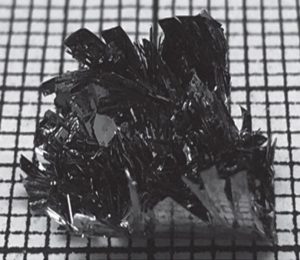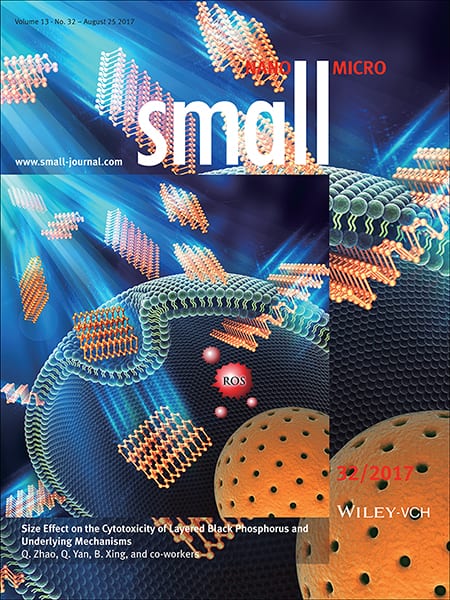About two hundred years ago, arsenic was particularly prized for the intense green color it could produce when added to almost anything: fabric for clothing or upholstery, candle wax, wallpaper, children’s toys – even confectionery. Today, however, it is most commonly applied for the preservation of wood, and the dangers associated with its more liberal use are recognized, its traffic properly regulated.
I’m reminded of unintended arsenic poisoning every time I hear of a new wonder material with potential applications in every other field of research, as is the current case with black phosphorous. I therefore look with a keen eye over studies undertaking the long, slow process of determining the conditions and dosages under which these materials may be safely applied.
Mindful in particular of potential biomedical applications, researchers from China and the USA have systematically examined the effect of size on the cytotoxicity of layered black phosphorous. Using a label-free, real-time cell analysis technique, they looked at the concentration-, size-, and cell type-dependent response of as-exfoliated black phosphorous (BP) samples.
They discovered an enormous 30-to-40-fold difference in the response to different BP sizes depending on cell type, with the larger BP sizes producing the higher cytotoxic response. Smaller layered BP sizes produced only a moderate cytotoxic response. The sensitivity of the different cell lines appeared consistent across the tested BP sizes.
Two possible mechanisms for the cytotoxicity of BP were also proposed: intracellular reactive oxygen species generation, and disruption of the cell membrane integrity. While BP was capable of both, the researchers noted that only the cell membrane integrity could be related to the size of the BP samples.
Systematic work like this allows researchers from all fields to maximize the useful properties of a material, without repeating unfavorable history. We hope to see such systematic work for all new materials.


















